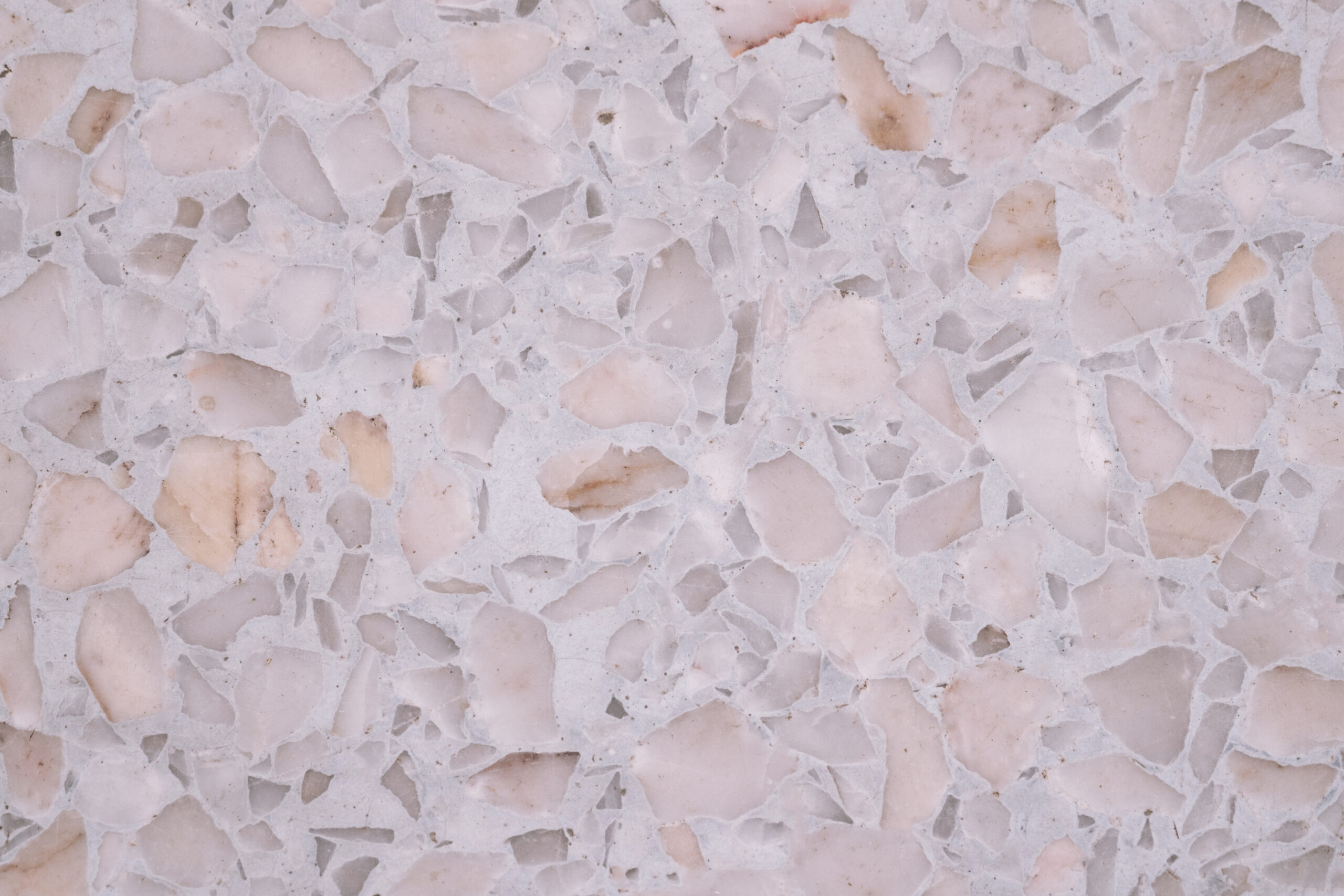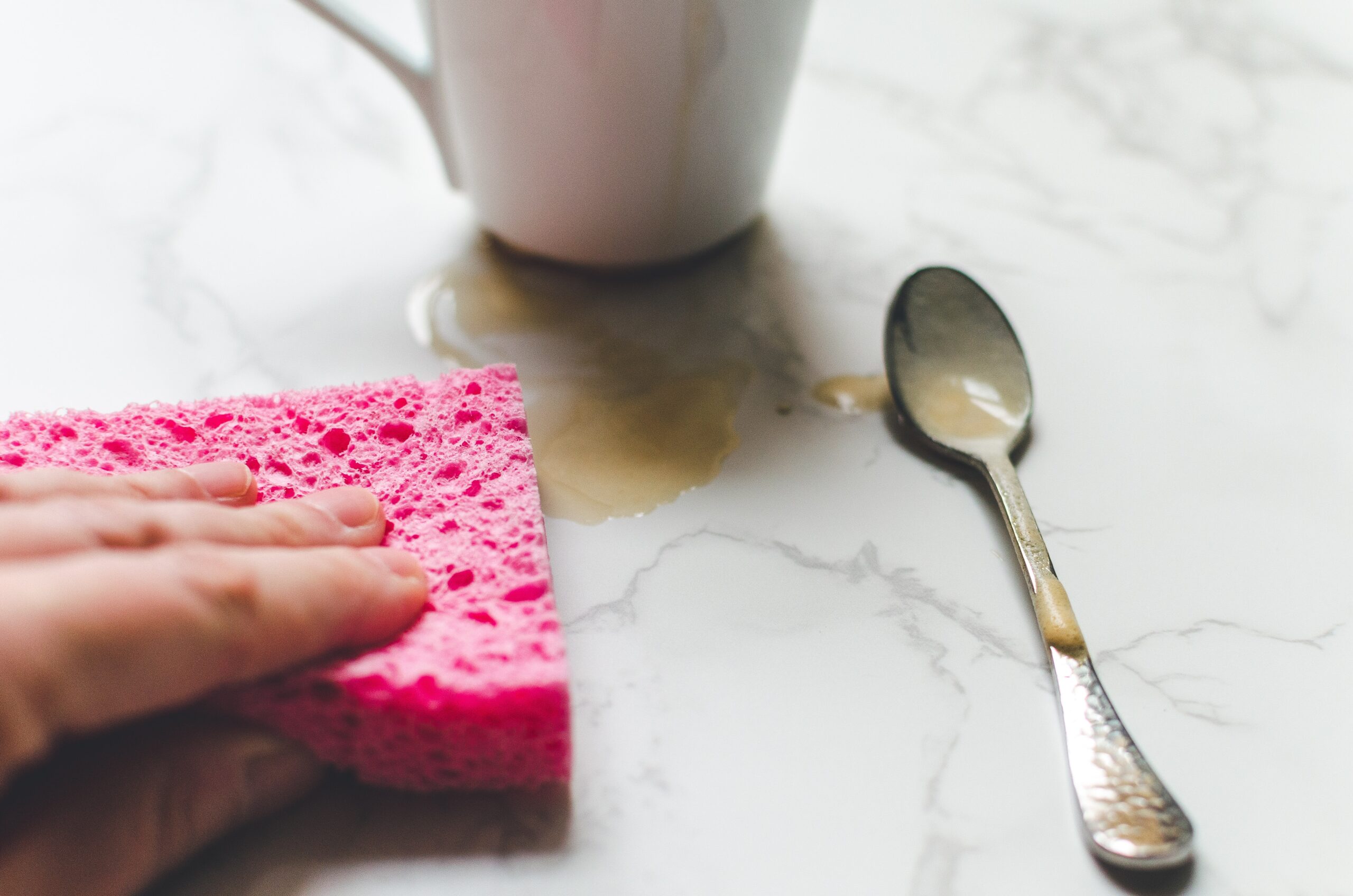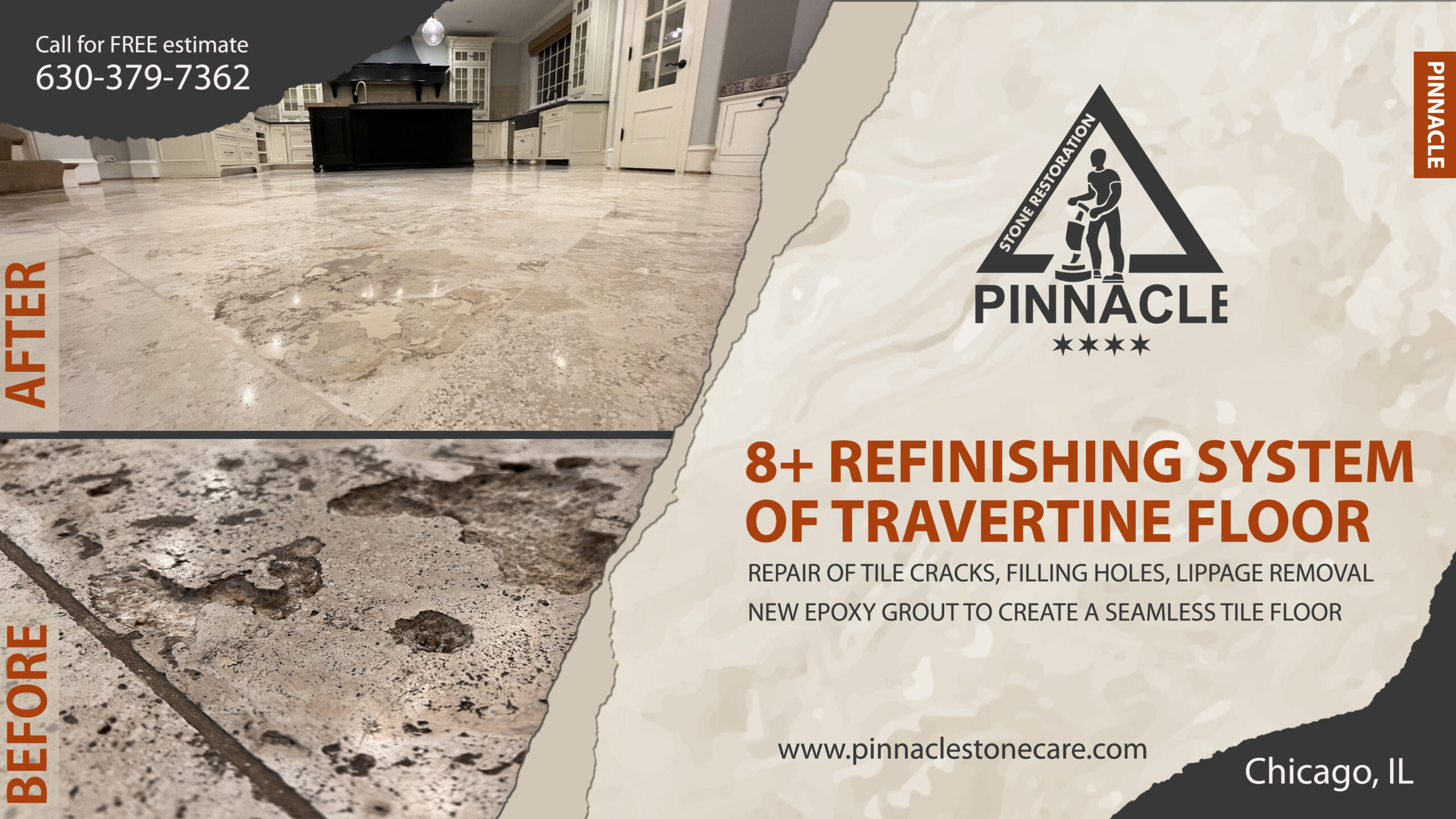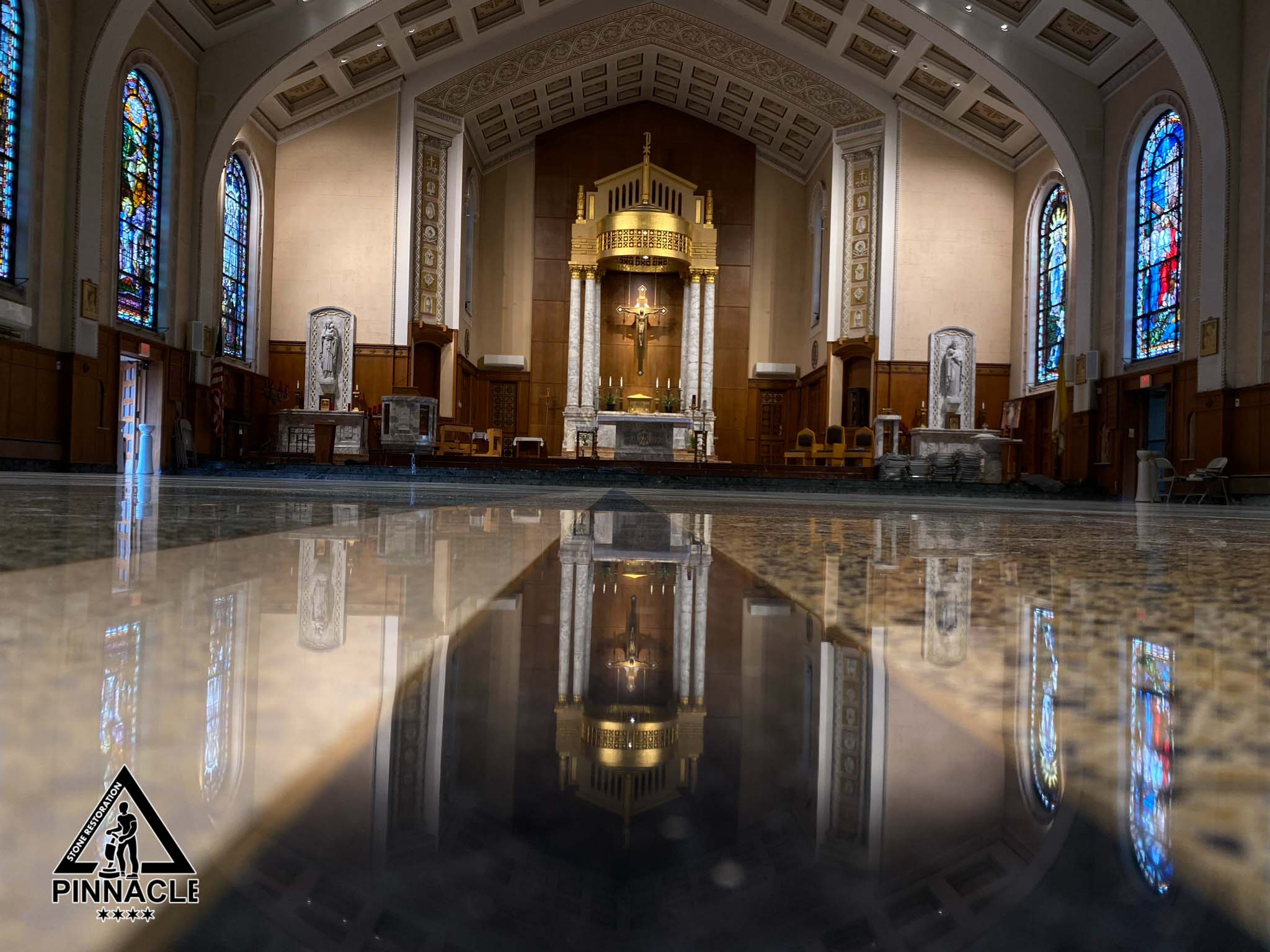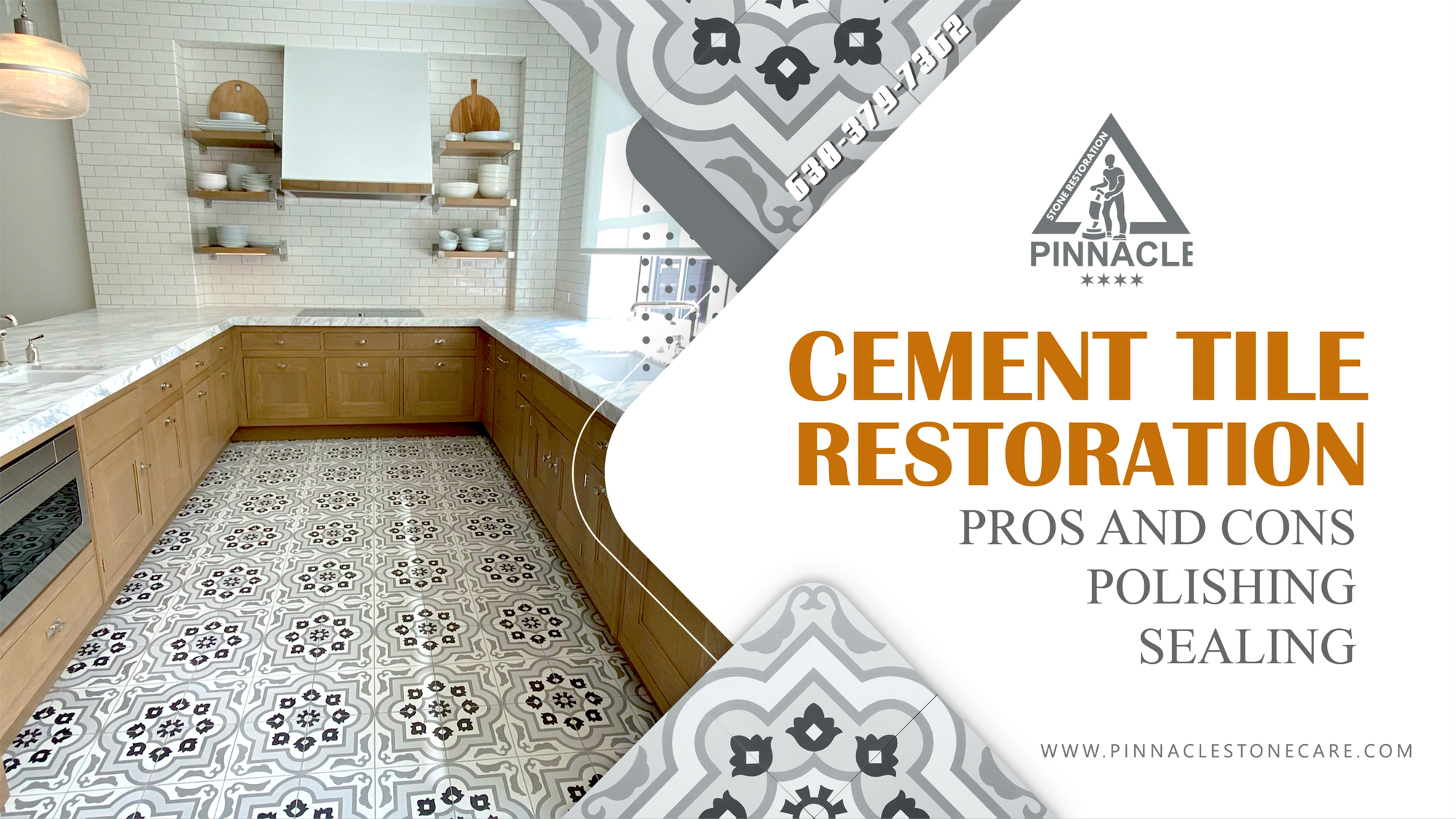Common Sealing Agents for Terrazzo Floors Terrazzo is a man-made material that gets poured into prepped substrate. After curing it gets grinded down to expose true design and aggregates. Rough cut is followed by a diamond honing process to enhance color and density.
One of the final steps in the process is diamond polishing as an optional and complimentary touch to develop high density and high resolution reflectivity. After all completed steps, terrazzo surface gets sealed with a sealing agent. In this blog we will cover terrazzo sealing methodologies and application techniques.
If we trace the history of terrazzo all the way to its birth, we will end up in The Roman Empire. A logical question would be, “What did Romans seal terrazzo with?” They used goat milk as a penetrating agent to fill pores of terrazzo and prevent it from staining.
Goat milk has a high fat content which worked as a repellant agent against most common liquid spills. I would hesitate to mention what other types of natural sealers terrazzo enthusiast have used throughout the industrial history of human civilization but the 20th century for sure brought and introduced several types of sealers for various types of terrazzo.
It is important to highlight terrazzo types that are commonly being used in the 20th and 21st centuries. In the early days of the previous century, cement base terrazzo was the only type of terrazzo out there.
By end of the 20th century, epoxy resin based terrazzo was introduced to the market and soon enough it dominated over cement base terrazzo. These days, 90% of terrazzo installed in United States and Canada would be epoxy based.
Regardless of terrazzo's complexity, types, and color and aggregate variations, the sealing process is straightforward. Terrazzo specialists like to use acrylic wax coatings to achieve a well projected and glossy looking terrazzo surfaces.
It also meets the industry requirements, not to mention its low cost and simple application techniques. Traditional application techniques for sealers Acrylic wax coating is the most commonly used finish for terrazzo floors.
The application process is fairly simple once the floor has been honed to a proper grit. Once floor is clean of debris and dry, the wax can applied, which can take up to four coats. Applying the wax can be done by using a mop and applying thin coats.
After application, the sealer can last from 6 months to a year depending on foot traffic. Although it is the most commonly used, it is also requires the most maintenance. Proper maintenance requires the existing sealer to be stripped off so new coats of sealer can be reapplied. Impregnating sealers can also be used to seal terrazzo floors.
Applying these types of sealers is done after the floor has been brought up to a high finish. The sealer gets diluted with water then applied mechanically with a floor machine while using a white pad. Sealer is left to soak for five minutes then the excess gets removed and floor is left completely wiped clean. This type of sealer works best on cementitious based terrazzo.
The other commonly used sealer for terrazzo floors are called Micro Toppings. These types of sealers work best after the floor has been polished with high grit diamonds. Application is done with microfiber pads and usually requires up to two coats.
Sealer is cured by burnishing with a high speed buffer to achieve the required heat to liquefy and bond the sealer to the terrazzo. This system is best for high traffic areas as it can withstand more wear and tear while still maintaining its high reflective finish.
Maintenance does not require any type of chemical stripping. You can either re burnish affected areas and reapply sealer or for heavier wear and tear hone floor and diamond polish and reapply sealer.

